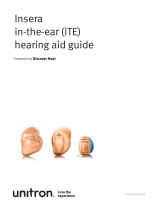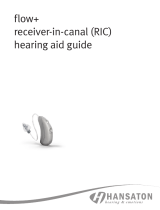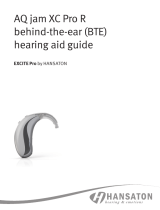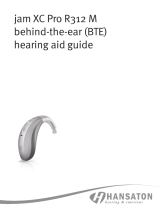
6 7
Do not leave children and individuals with
cognitive impairment unsupervised with
these hearing aids. If swallowed, consult
a physician or hospital immediately as
the hearing aids or their parts can cause
choking.
Do not make a wire connection from your
hearing aids to any external audio sources
like radio etc. That could cause injuries on
your body (electric shock).
The following is only applicable for persons
with active implantable medical devices
(i.e. pacemakers, debrillators, etc.):
- Keep the wireless hearing aids at least 15
cm (6 inches) away from the active implant.
- If you experience any interference, do not
use the wireless hearing aids and contact
the manufacturer of the active implant.
Please note that interference can also
be caused by power lines, electrostatic
discharge, airport metal detectors etc.
Special medical or dental examination
including radiation described below, may
adversely aect the correct functioning of
your hearing aids. Remove and keep them
outside the examination room/area before
undergoing:
- Medical or dental examination with X-ray
(also CT scan).
- Medical examinations with MRI/NMRI
scans, generating magnetic elds.
- Hearing aids don’t need to be removed
when passing security gates (airports etc.).
If X-ray is used at all, it will be in very low
doses, and will not aect the hearing aids.
Use of this equipment adjacent to or
stacked with other equipment should be
avoided because it could result in improper
operation. If such use is necessary, this
equipment and the other equipment should
be observed to verify that they are operating
normally.



























